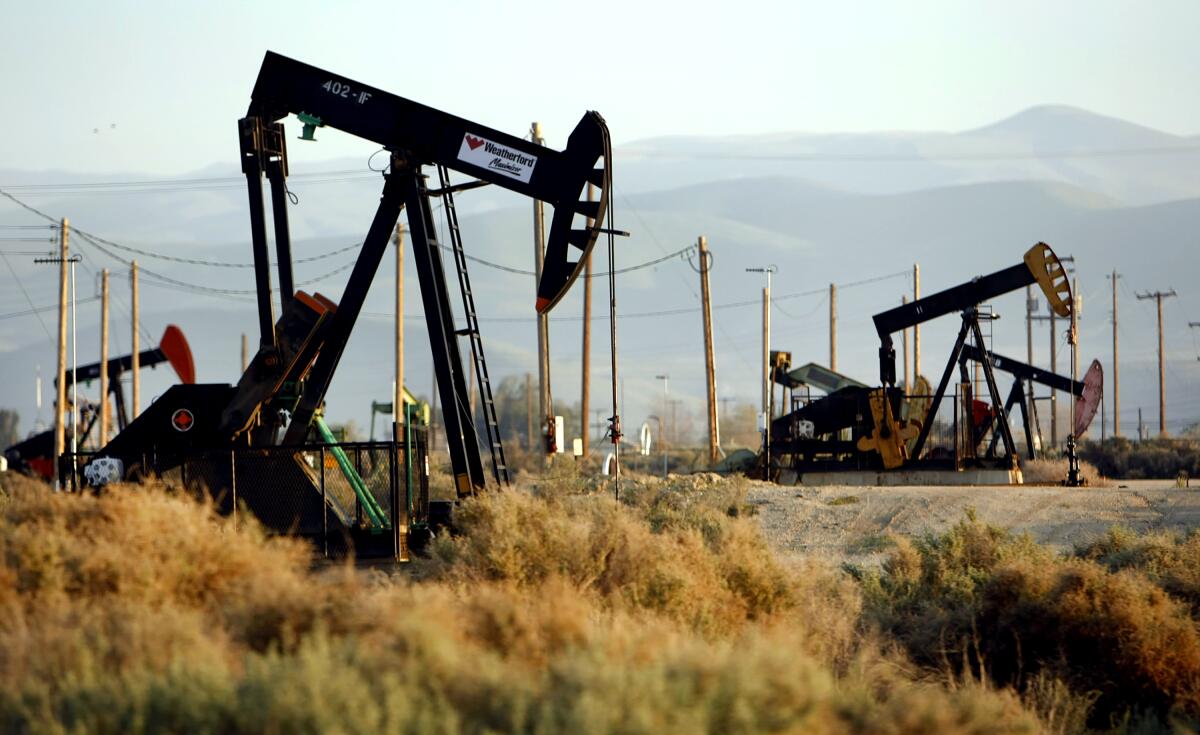How much of your insurance premiums are being invested in fossil fuels?

- Share via
A new report from California’s insurance commissioner shows how much insurance companies are investing in fossil fuels in a continual effort to address the insurance industry’s role in combating climate change.
“There’s no good number of fossil fuel investments,” said California Insurance Commissioner Ricardo Lara. “We need to transition companies as quickly as possible, and also give them a comprehensive strategy to get them to increase their green investments.”
Insurance companies invest premiums paid by customers to help pay claims. According to the report, which covered insurance companies operating in California subject to regulation, more than $536 billion were invested in fossil fuels in 2019, or about 9% of managed assets.
The report also tabulates how much companies have invested in green bonds, which finance projects related to energy efficiency, pollution prevention, sustainable agriculture, clean transportation, sustainable water and more. In 2019, approximately $11.4 billion was invested in green bonds — double the $5.03 billion invested in 2018.
“Fossil fuel investments are contributing to the very emissions that are intensifying wildfires and floods,” Lara said. The goal is to “reduce fossil fuel investments and increase green investments.”
Lara’s office has previously released a Climate Smart Insurance Products database. The office hopes to encourage not just green investing but also insurance coverage for more green projects.
According to a database on the California Department of Insurance website, approximately half of the insurance companies in the report have 5% or less of their managed assets invested in fossil fuels. The company with the highest percentage of fossil fuel assets is CSI Life Insurance, part of Berkshire Hathaway, with 75%.
Teachers Insurance and Annuity Assn. of America has nearly $25 billion in fossil fuel investments, though it only represents 10% of their portfolio.
Insurance companies in Europe have led the world in moving away from fossil fuels, with some major insurers committing to ending investment in, and underwriting of, fossil fuel projects.
It may be more difficult to divest from fossil fuels in the U.S. due to energy industry giants such as Chevron and ExxonMobil and the overall dominance of fossil fuels over renewable energy sources, says DBRS Morningstar insurance analyst Victor Adesanya. While about 25.1% of Europe’s energy production came from oil, coal and natural gas in 2020, about 79% of U.S. energy production came from those sources.
Though green bonds are similar to other fixed income tools in terms of yield, term length and interest rate, availability can be an issue for companies looking to invest since it’s a relatively new and still evolving market, Adesanya said.
However, this first step in increasing transparency is critical, Lara said.
California has been a leader in pushing insurance companies to disclose their climate risk.
Earlier in April, Lara and Florida’s insurance commissioner, David Altmaier, led a bipartisan effort to adopt a new standard for insurance companies to disclose their climate risk in alignment with international standards.
France, Switzerland and the United Kingdom currently require reports aligned with these standards. In 2022, 15 states including California will also require reports from insurance companies aligned with these standards, representing 80% of the U.S. insurance market.
“That’s important for individual consumers who want to know whether or not their premium dollars are being used to harm the environment,” said Douglas Heller, director of insurance at Consumer Federation of America.
Heller also sees a “downstreaming” of the pain of climate change from the industries that cause it to the communities most affected by the increasingly destructive natural disasters that scientists have said are a product of climate change.
The wildfires in California are one example. Many mass-market insurers have pulled out of fire-prone areas, causing homeowners’ insurance to become increasingly more expensive.
But these natural disasters can also be framed as an incentive for insurance companies — especially property and casualty insurers — to pull out of fossil fuels, as they can cause immense amounts of property damage that insurers then have to pay out claims for.
“There’s large scientific support to say that climate change is causing these weather events to become more severe and more frequent,” said Nadja Dreff, an insurance analyst with DBRS Morningstar. “So to be investing in kind of carbon intensive industries that are contributing more to climate change would be kind of a contradiction in terms.”
Some analysts say there’s long-term financial risk involved as well. There’s potential for investments in the oil and gas industry to become “stranded assets” that are difficult to develop or sell as the green energy sector expands and fossil fuels become less lucrative, said Patrick Douville, an insurance analyst with DBRS Morningstar.
As companies are confronted by increasing regulatory and social pressure, Dreff said she believes fossil fuel holdings are likely to decrease gradually.
“It’s about an orderly transition to a low-carbon economy,” Dreff said.
More to Read
Sign up for Essential California
The most important California stories and recommendations in your inbox every morning.
You may occasionally receive promotional content from the Los Angeles Times.











